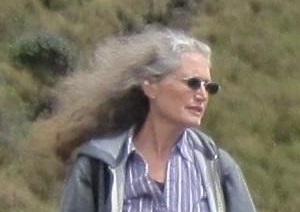By Bob Allen
A Missouri Baptist lobbyist whose wife went missing 16 months ago is turning to deer hunters for help.
“The half-million hunters that go out in the woods during this deer season, if they would all hear the message and if they would all pay attention and report the odd items, someone’s loved one is going to be found,” Kerry Messer, a pro-family lobbyist with clients including the Missouri Baptist Convention, recently told KFVS television in Cape Girardeau, Mo.
 Last year Messer, whose wife, Lynn, 52, disappeared without a trace from their 120-acre farm near Ste. Genevieve, Mo., during the night of July 8, 2014, launched Support the Hurting, a nonprofit educational campaign aimed at turning hunters, farmers and other outdoor enthusiasts into the world’s largest search party.
Last year Messer, whose wife, Lynn, 52, disappeared without a trace from their 120-acre farm near Ste. Genevieve, Mo., during the night of July 8, 2014, launched Support the Hurting, a nonprofit educational campaign aimed at turning hunters, farmers and other outdoor enthusiasts into the world’s largest search party.
Each year deer hunters find human remains in remote wooded areas seldom passed by humans.
Police in Michigan are seeking clues about the identity of a human skull found Nov. 16 by two hunters tracking a trail of blood from a wounded deer in St. Clair County near Detroit.
In late October two deer hunters in Kingsport, Tenn., stumbled on human remains tentatively identified as an 80-year-old man suffering from Alzheimer’s and dementia who wandered away from his home six weeks earlier.
The Los Angeles Times reported Oct. 13 that authorities were trying to identify a human skull found by a couple of bow-and-arrow wielding deer hunters in the Angeles National Forest.
Hunters in Mississippi came across human skeletal remains at a deer camp in a secluded, wooded area of Attala County Oct. 10, Sheriff Tim Nail told WAPT News in Jackson, Miss.
State police in Vermont believe skeletal remains found by a hunter Oct. 21 might belong to a wanted sex offender who went missing in the fall of 2004 after a warrant was issued for his arrest.
Messer said in a Facebook posting Nov. 14 that while anyone would report finding a body, many hunters might overlook less obvious clues, like unusual items found in odd places. Should they find something that piques their interest, Messer prescribed a three-pronged strategy: Don’t Touch! Document Location! Report to Local Law Enforcement!
“Use discretion,” he counseled. “Things like a 30-year-old beer can in the woods should not raise your curiosity the same as a pair of prescription eyeglasses, a child’s backpack of schoolbooks or a lady’s blouse and jewelry.”
Messer said he hears from outdoors adventurers all the time who say they have seen something at one time or another but never gave it a second thought. “We are begging you to commit yourself to that second thought,” he pleaded.
“Don’t touch” is important, Messer said, because handling an item connected to a missing person might contaminate DNA evidence and placement of a clue is important to police investigating a crime scene. If you do touch something before thinking, he advised, follow the other two steps and be sure to tell authorities about your mistake.
Documenting location is easier than ever, Messer said, because most hunters carry cell phones with cameras, GPS tracking apps that can be pinged or at least texting capabilities to type in details about the location.
“Be specific,” he recommended. “As the sun moves from the east to the west, things can look very different. Time can also play tricks with your memory in unfamiliar terrain. If you carry marking ribbon, be sure to physically mark the location.”
Unless you see something highly remarkable, Messer said, it isn’t necessary to rush out of the woods to report it to authorities.
“No one expects you to ruin your outdoor experience,” he said. “However, when you do leave the woods or other area from your planned activities, please, please, please follow through by reporting your discovery to the local law enforcement agency in the area of your discovery. They will determine if it is of importance.”
Messer said every day 2,300 Americans are reported missing.
“I am amazed at how many people have looked me in the face and said, ‘People don’t just vanish’ or ‘No one simply disappears,’” Messer said. “Well, apparently they do.”
Messer said disappearances happen for “a myriad of reasons and causes” and the vast majority of missing persons are found, eventually, either dead or alive. But with 110,000 unsolved missing person cases in the country, he said, there are many hurting loved ones like his family suffering the anguish of “not knowing.”
“Through our efforts to educate the outdoors loving community of hunters and hikers, farmers and fishermen and others, our goal is to turn these groups of folks into the world’s largest search party!” Messer said. “To do that we must educate them on the simple three-step approach to their sightings of unusual articles that very well may lead to a missing loved one — or at least redirect or jumpstart a search that is focused in the wrong direction or that has fizzled out from a lack of direction.”
Previous stories:
Lynn Messer still missing after a year
Lobbyist’s wife still missing after six months
